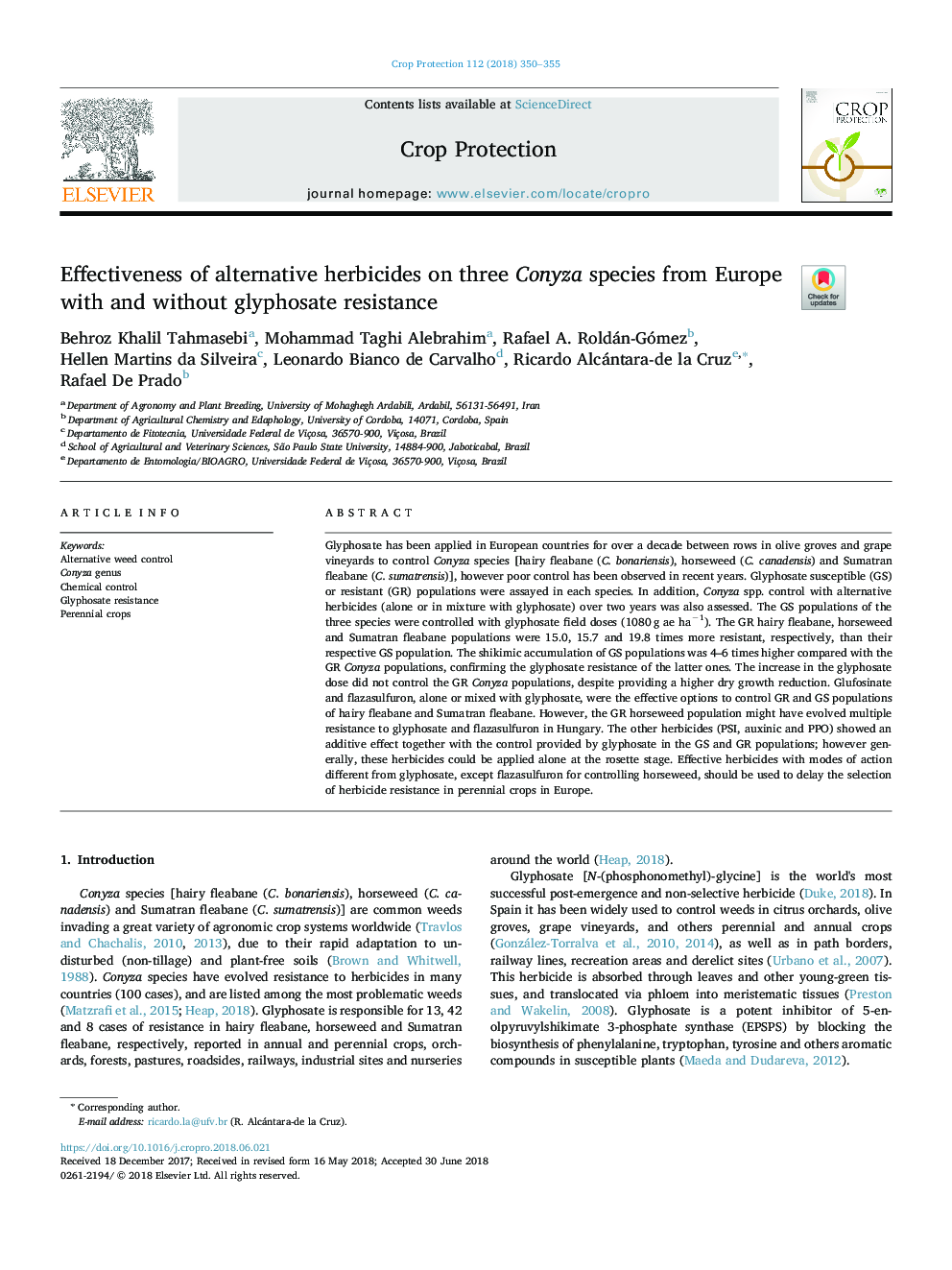| Article ID | Journal | Published Year | Pages | File Type |
|---|---|---|---|---|
| 8877995 | Crop Protection | 2018 | 6 Pages |
Abstract
Glyphosate has been applied in European countries for over a decade between rows in olive groves and grape vineyards to control Conyza species [hairy fleabane (C. bonariensis), horseweed (C. canadensis) and Sumatran fleabane (C. sumatrensis)], however poor control has been observed in recent years. Glyphosate susceptible (GS) or resistant (GR) populations were assayed in each species. In addition, Conyza spp. control with alternative herbicides (alone or in mixture with glyphosate) over two years was also assessed. The GS populations of the three species were controlled with glyphosate field doses (1080â¯g ae haâ1). The GR hairy fleabane, horseweed and Sumatran fleabane populations were 15.0, 15.7 and 19.8 times more resistant, respectively, than their respective GS population. The shikimic accumulation of GS populations was 4-6 times higher compared with the GR Conyza populations, confirming the glyphosate resistance of the latter ones. The increase in the glyphosate dose did not control the GR Conyza populations, despite providing a higher dry growth reduction. Glufosinate and flazasulfuron, alone or mixed with glyphosate, were the effective options to control GR and GS populations of hairy fleabane and Sumatran fleabane. However, the GR horseweed population might have evolved multiple resistance to glyphosate and flazasulfuron in Hungary. The other herbicides (PSI, auxinic and PPO) showed an additive effect together with the control provided by glyphosate in the GS and GR populations; however generally, these herbicides could be applied alone at the rosette stage. Effective herbicides with modes of action different from glyphosate, except flazasulfuron for controlling horseweed, should be used to delay the selection of herbicide resistance in perennial crops in Europe.
Related Topics
Life Sciences
Agricultural and Biological Sciences
Agronomy and Crop Science
Authors
Behroz Khalil Tahmasebi, Mohammad Taghi Alebrahim, Rafael A. Roldán-Gómez, Hellen Martins da Silveira, Leonardo Bianco de Carvalho, Ricardo Alcántara-de la Cruz, Rafael De Prado,
